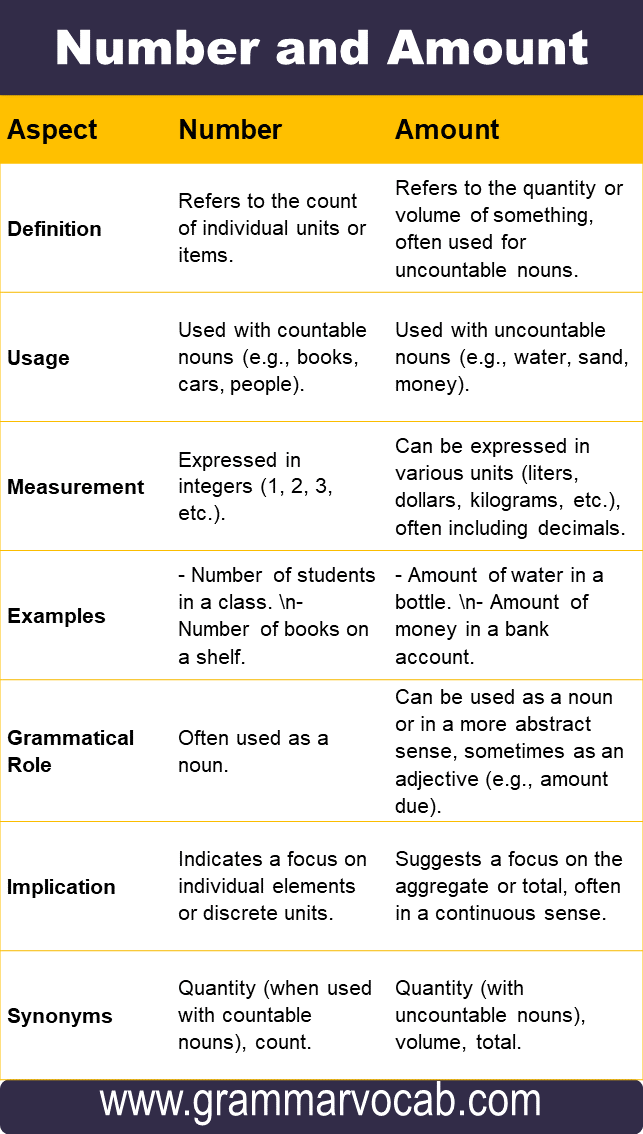Have you ever wondered why we say “a large number of people” but “a small amount of sugar”? Words can be tricky, especially in English. Today, we’re going to explore the difference between two words that often confuse people: “number” and “amount”. These words may seem similar, but they are used in different situations. Understanding this difference can make your English sound more natural and correct.
What is ‘Number’?
The word ‘number’ is used when we can count things one by one. These things are usually separate and we can see each one. For example, think about apples in a basket. You can count each apple: one apple, two apples, three apples, and so on. Here, we use ‘number’ because we can count the apples.
Examples of ‘Number’:
- The number of books on the shelf is ten.
- I saw a large number of birds in the sky.
In these sentences, books and birds are things we can count.
What is ‘Amount’?
The word ‘amount’ is used when we talk about things we cannot count one by one. These are often things we see as a whole or things that are not separate. For example, think about water in a bottle. We don’t count water drop by drop. We just see it as a whole. So, we use ‘amount’ to talk about how much water there is.
Examples of ‘Amount’:
- The amount of milk in the glass is enough for breakfast.
- She has a great amount of knowledge about plants.
In these sentences, milk and knowledge are things we cannot count one by one.
‘Number’ and ‘Amount’
| Aspect | Number | Amount |
| Definition | Refers to the count of individual units or items. | Refers to the quantity or volume of something, often used for uncountable nouns. |
| Usage | Used with countable nouns (e.g., books, cars, people). | Used with uncountable nouns (e.g., water, sand, money). |
| Measurement | Expressed in integers (1, 2, 3, etc.). | Can be expressed in various units (liters, dollars, kilograms, etc.), often including decimals. |
| Examples | – Number of students in a class. \n- Number of books on a shelf. | – Amount of water in a bottle. \n- Amount of money in a bank account. |
| Grammatical Role | Often used as a noun. | Can be used as a noun or in a more abstract sense, sometimes as an adjective (e.g., amount due). |
| Implication | Indicates a focus on individual elements or discrete units. | Suggests a focus on the aggregate or total, often in a continuous sense. |
| Synonyms | Quantity (when used with countable nouns), count. | Quantity (with uncountable nouns), volume, total. |
Tips for Remembering the Difference
Here are some tips to help you remember when to use “number” and when to use “amount”:
- Think about counting: If you can count it, use “number”. If you can’t count it easily, use “amount”.
- Look at the noun: Is the noun countable or uncountable? This will guide you on which word to use.
- Practice makes perfect: The more you practice, the easier it will become to remember the difference.
Must Try:




